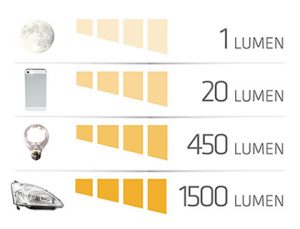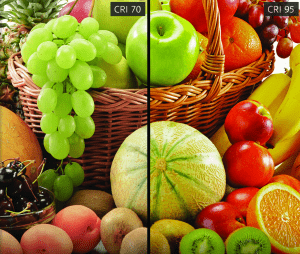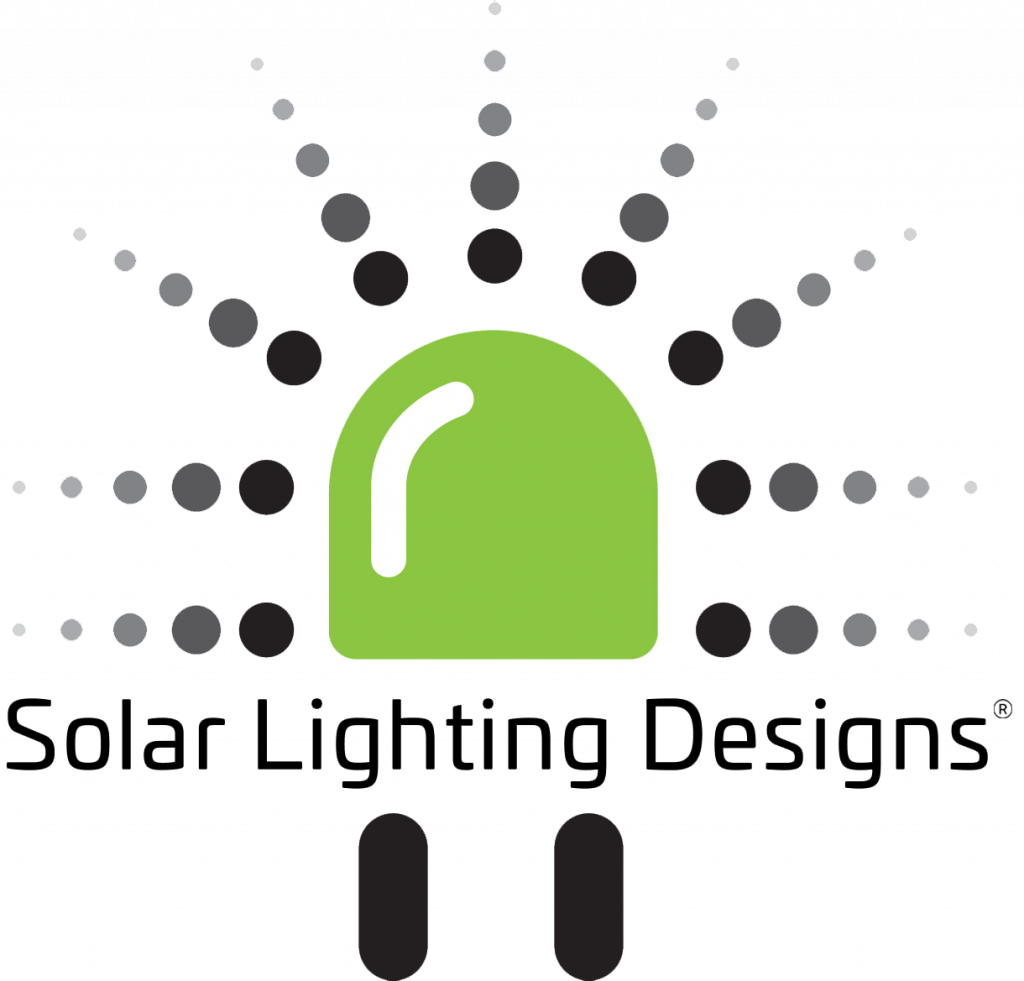Frequently Asked Questions
Welcome to our FAQ page, your one-stop source for quick answers. Browse common questions about products and services
FAQs
Solar
Lighting
Designs
Solar Lighting Designs
©2024
Find the answers to all your most
Find the answers to all your most frequently asked questions.
frequently asked questions.
General
A solar light is one that captures the sun’s rays and stores them to power the light when it becomes dark. Seems easy enough, right? and it is. Solar-powered lighting consists of a solar panel or photovoltaic cell that collects the sun’s energy by allowing photons, or particles of light, to knock electrons free from atoms, generating a flow of electricity that is stored in a rechargeable battery. Other components include an intelligent controller that prevents the solar panel from overcharging the battery. Once the sun goes down the controller senses that no more energy is being gathered so it automatically turns on the LED light and viola, you have light that is using energy from the sun. LED lights, or light emitting diodes will emit that light in an efficient controlled way. They also have a long life, meaning you won’t be replacing your solar lights any time soon. So, we know what solar lights are and how they work, but how are they beneficial? For starters they are totally green. This means environmentally friendly because they don’t need to be plugged in, they aren’t draining our electricity and they are not emitting any harmful gasses back into the atmosphere. In other words, they are clean energy. Each day the energy stored in the battery is renewed by the sun. Our Solar lights simply go about their business of recycling the sun’s energy day after day, even when the sun isn’t shining directly onto them. Once it gets dark they come on, each and every night. They are reliable and easy to install. Solar lights are stand alone. They can be used anywhere and everywhere from gardens to docks and from boats to walkways. Solar lights are a unique way and functional way to light your pathways, roads, parks and gardens or just about anywhere, they come in many applications and many shapes and sizes, but they all do the same thing, use a renewable resource to power themselves. Solar is a fantastic way to light our way.
Is solar lighting more economical than conventional lighting, you tell me.
- The purchase of any solarlightingdesigns.eco solar lighting product is a once of cost
- With the advances in technology the emitted light rival’s mains power products
- Simple and inexpensive to install, no electrician required, no trenching, cabling or conduiting.
- There is basically zero maintenance
- Never replace a globe
- You will never receive a power bill, ever.
- Easily relocatable lighting, across the yard or from house to house
We understand that selecting the correct solar lighting solution for your individual needs can be a little confusing. At solarlightingdesigns.eco you are dealing directly with the importer and manufacturer of the product, we understand the technology, its benefits and its applications, what’s more were pleased to share this knowledge with you to ensure you receive the correct product.That being said we are the first to agree solar lighting technology has its benefits, for the environment and for your pocket but It does have limitations. We will take the time to discuss your specific application ensuing you have the right information to make an informed choice on whether solar lighting is the right choice, and if so which style, lumen output, size or type will suit best.If you have further questions I’d encourage you to contact our experienced staff any of our three offices in Sydney, Brisbane or Perth on 1300 76 52 65 to discuss your solar lighting application.
In simple terms, Lumens are a measure of the total amount of visible light from a lamp or light source. The higher the lumen rating, the “brighter” the lamp will appear.
- Path and walkway lighting
- Parking lot and carparks
- Cycleway lighting
- Multi-use lighting
- Municipal park lighting
- Campus lighting
- Egress lighting
- Landscape lighting
- Commercial area lighting
- Public area lighting
- Transit lighting
- Security lighting
This can be dependent on many factors, some are;
- Is the lighting required to meet Australian Standards P4 Compliance
- What are you attempting to achieve with the lighting
- Is the lighting decorative or for safety
We have made some recommendations on the product page of each light, if you have questions please call to discuss, we’re happy to help

Australian Standard AS/NZ 1158.3.1 P4 compliant lighting certification ensures our products meet the lighting standard for roads, walkways, cycle ways and public spaces. We are happy to discuss this with you if you have questions regarding compliance.
- 100 lux – This level of light is sufficient for lifts, corridors and stairs. Areas that are transitory for occupants and don’t require any detailed work. Warehouse areas and bulk stores will also require this minimal light level. You wouldn’t want to read a book in this sort of light, but it is good enough to get around without injuring yourself and see where you are going.
- 150 lux – Restrooms and plant rooms require this level of light. Again this is not particularly bright but good enough for simple tasks.
- 200 lux – Entrance areas and lobbies require this level of light, and it is also the minimum for a restaurant dining area.
- 300 lux – Assembly Areas, like village halls require at least 300 lux
- 500 lux – Retail spaces should have this as a minimum light level, as should general office spaces. This level should be suitable for prolonged work on computers, machinery and reading.
- More than 500 lux – If you have an area where intricate work is being carried out, then very high lux values may be needed. Where fine detailed work is being carried out, anything up to 2,000 lux can be used – this is usually only necessary in fairly unusual circumstances. For most purposes, 500 lux will be ample.
- The lux (symbol: lx) is the standard unit of illuminance and luminous emittance, measuring luminous flux per unit area. It is equal to one lumen per square metre. In photometry (the science of measuring light), this is used as a measure of the intensity, as perceived by the human eye, of light that hits or passes through a surface
The lumen (symbol: lm) is the standard derived unit of luminous flux, a measure of the total quantity of visible light emitted by a source. Lumens are related to lux in that one lux is one lumen per square meter.
Basically, the higher the number of lumens a light source emits, the brighter it is.
- Familiar examples
- A typical 4 x D cell battery Maglite will emit approx. 70 lumens
- The average hardware shop path light using 2-3 LEDs emits 15-18 lumens
- A 25W incandescent globe emits approximately 160 lumens

- Correlated color temperature
In order to differentiate the various hues of white, artificial light sources like LED lightbulbs are labeled with a correlated color temperature, or CCT.
Lighting color is measured in Degrees Kelvin, with different temperatures providing different colored light. LED lights with lower Kelvins appear warm, like candlelight or incandescent lamps. Neutral daylight-like LEDs are 4000-5000K. LED bollard lights in the 6000-7000K range cast their surroundings in a cold, icy blue.As the lighting color most similar to daylight, neutral light is the most common LED light option. Warm light creates a softer ambience and is often used in landscaping and decorative applications. It offers the advantage of more effectively conserving power than other colors, as cooler temperature lights are more efficient than warmer ones


- Can’t tell the difference between the black and navy colored socks in your walk in closet? Could be that your current lighting source has a very low CRI! Not all light is made equal; some LED’s renders color better than others. Color Rendering Index (CRI) is the measurement of how colors look under a light source when compared with sunlight. The index is measured from 0-100, with a perfect 100 indicating that colors under the light source appear the same as they would under natural sunlight.

- Lumen output varies by product. Please view the product specification on each light or download the individual product Data Sheet on relevant web page
- Yes, our solar lights charge on cloudy days. During daylight, even when overcast, the solar panels continue to charge the batteries, and on a full charge the system is designed to work for at least three days with no sun.
- Yes, the standard operating profile will operate dusk to dawn on a four-hour charge. Fully charged they will operate dusk to dawn for up to three nights with no additional charge.
All Solar Lighting Designs and lights use lithium Ion or LifePo4 batteries as their energy storage device. They are a cost effective, environmentally responsible way to add long lasting brightness and beauty to your evening landscape while increasing safety.
The advantages of using rechargeable lithium ion batteries as opposed to typical rechargeable lead acid batteries are as follows:
Chargeability
Where lead acid batteries can be charged and discharged approx. 1,000 times a lithium ion battery can be charged and discharged approx. 5,000 times
Superior “Useable” Capacity.
Unlike with lead acid batteries, it is considered practical to regularly use 85% or more of the rated capacity of a lithium ion battery bank, and occasionally more
Fast & Efficient Charging.
Lithium ion batteries can be “fast” charged to 100% of capacity. Unlike lead acid, there is no need for an absorption phase to get the final 20% stored. If you experience several partly cloudy days with your solar light lithium batteries have no problem being topped off before the sun goes down. With lithium ion batteries you can charge up what you can and not fret about leaving your battery bank perpetually undercharged
Very Little Wasted Energy.
Lead acid batteries are less efficient at storing power than lithium ion batteries. Lithium batteries charge at nearly 100% efficiency, compared to the 85% efficiency of most lead acid batteries.
Climate Resistance.
Lithium ion batteries are much more efficient at low temperatures. For harsh environments (hot and cold), Lithium-Ion batteries have a technological advantage
Little Maintenance Requirements.
Lithium Ion batteries are very virtually maintenance free.
Size & Weight Advantages.
Lithium ion batteries are as much as 77% smaller in dimension and 194% lighter than the equivalent lead acid battery
Outdoor solar lights come with an on/off switch so you can control when you want your solar light to turn on. If you want the outdoor solar light to continue to work all day every day, you can simply leave the on/off switch in the on position. If you want to charge the outdoor solar light and use the light at a later time (such as a weekend party), you can turn the on/off switch to off until you are ready to use it. When the switch is in the off position, the light will continue to receive electricity from the sun and store it for later use.
First, check to make sure the on/off switch is in the on position. Second, make sure another light source isn’t preventing the light from turning it on. Move your outdoor solar light to a darker location and see if the light comes on. If it still doesn’t illuminate, check to make sure the batteries are fully charged. Move the solar panel to another spot during the day to see if it will receive more sunlight. Note: The batteries included with your solar light will need to be replaced when their charging ability is decreased. They should be replaced approximately every five years.
Solar Lighting Design solar lighting is virtually maintenance free, since the batteries require no regular service, the LED’s have an expected life span exceeding 50,000 hours. Simply wipe over the panel every now and again with a wet cloth.
Each component of a solarlightingdesigns.eco solar light has a different manufacturer expected lifespan:
- Solar panels: up to 20 years
- Batteries: approx. 5 years
- LED fixtures: exceeding 50,000 hours
- Electronics: approx. 10 years
Nominal Voltage – what the voltage of any particular battery is called (not necessarily exactly what it is).
Most batteries actually have a voltage slightly higher than what you see on the label. As an example a 12 volt lead acid battery is usually, in reality, a 12.6 or 12.7 volt battery. Manufacturers make batteries this way because producing units of exactly X volts is actually surprisingly hard. Voltages vary even between batches coming off the same production line. As such it is safer to have a margin of error so they cannot be accused of marketing a 12 volt battery while selling an 11.7 volt unit.
The nominal voltage is what they market the battery as and what it is generally referred to. As an example using sealed lead acid batteries – a SLA battery that says 6 volts on the label has a nominal voltage of 6 even it its actual voltage when fully charged is 6.23. This ‘real’ voltage is known as the charge voltage – what the battery should be charged to, not what is on the label!
Charge Voltage – the amount of battery voltage when the battery is fully charged or the voltage available at any given point during the charging process.
Understanding the voltage of a battery gradually decreases as it discharges., the charge voltage refers to this ‘real’ voltage when the battery is fully charged.
Voltage then is a measure we can use to see if a battery is fully charged, but only if we know what the real voltage should be, not what is on the label. To stop charging a 12 volt battery when it reaches 12 volts would be to undercharge it and doing this regularly will reduce its life span. As such, the term charge voltage refers to the ‘real’ voltage of the fully charged battery in order to know when it is really truly charged.
The above refers to lead acid batteries as examples although the same is relevant to batteries in general including lithium and lithium-ion (LiFeP04) cells
Information sourced from batteryguy.com – Nominal Voltage and Charged Voltage
We carry ample stock of our most popular models and can have those ready to ship or pickup within 1 – 2 business days, delivery time is dependent on your location. You are more than welcome to pick up from our warehouse
Installations
Our products are fully self-contained and do not require external wiring. This allows for simple installation with no trenching, no cabling and no conduiting. Easily installed with minimal environmental site disturbance.
Solar Lighting Designs lights are very easy to install as compared with other solar lights, especially compared to wired lights. Here’s why that is:
Our solar lights don’t require a connection to the electrical grid, so there is no need for trenching, cabling or wiring.Our lights are self-contained (solar panel, battery and light are integrated), so there is no assembly required, and there is no need to run wires between the solar panel and the light.Quite simply, our lights are designed to be installed by lay people without the aid of an electrician or other technical trades.
If possible place solar panel away from over hanging trees and away from structures that cast shadows
Try not to place the solar panel where other light sources will shine onto them at dusk, the light sensor installed in the panel will not know its dusk and may not turn on
Charge battery for a minimum 12 hours initially for best results, recharge after this is 4 – 6 hours
Typically mounted on concrete footings, directly to your slab, secured to concrete pavers (installed just below ground level or hidden with mulch) or ground screws, our lights are very easy to install
We recommend a a first charge (after unpacking) of between 10 – 12 hours in full direct sunlight. Recharge after providing a night of light is between 4 – 6 hours.
The LED’s and solar panel will last longer than the battery, so it does not make sense to have to replace the whole unit when the battery finally dies. Replacement batteries are available from us
To properly look after and maintain your battery, it is recommended that the battery be charged and discharged monthly.
Although lithium-ion batteries are non-toxic, it’s still important to recycle them appropriately. Recycling centres that accept lithium-ion batteries are common and easy to find in Australia. These centres typically disassemble the batteries in a manner that completely prevents any harm to the environment. Once disassembled, the individual parts and materials are then recycled and reassembled into new materials. Contact your local recycling centre for more information or alternatively return them to us and we will deliver then to our local recycling centre
Company
Yes. With our own in-house manufacturing located in Sydney, we can manufacture bollards or lighting options to many different specifications. Please email us with as much detail on the requirements as possible including the total height above ground, whether it is to be an concreted in-ground or bolted down, the material – stainless steel or mild steel, and of course, the type of finish required

